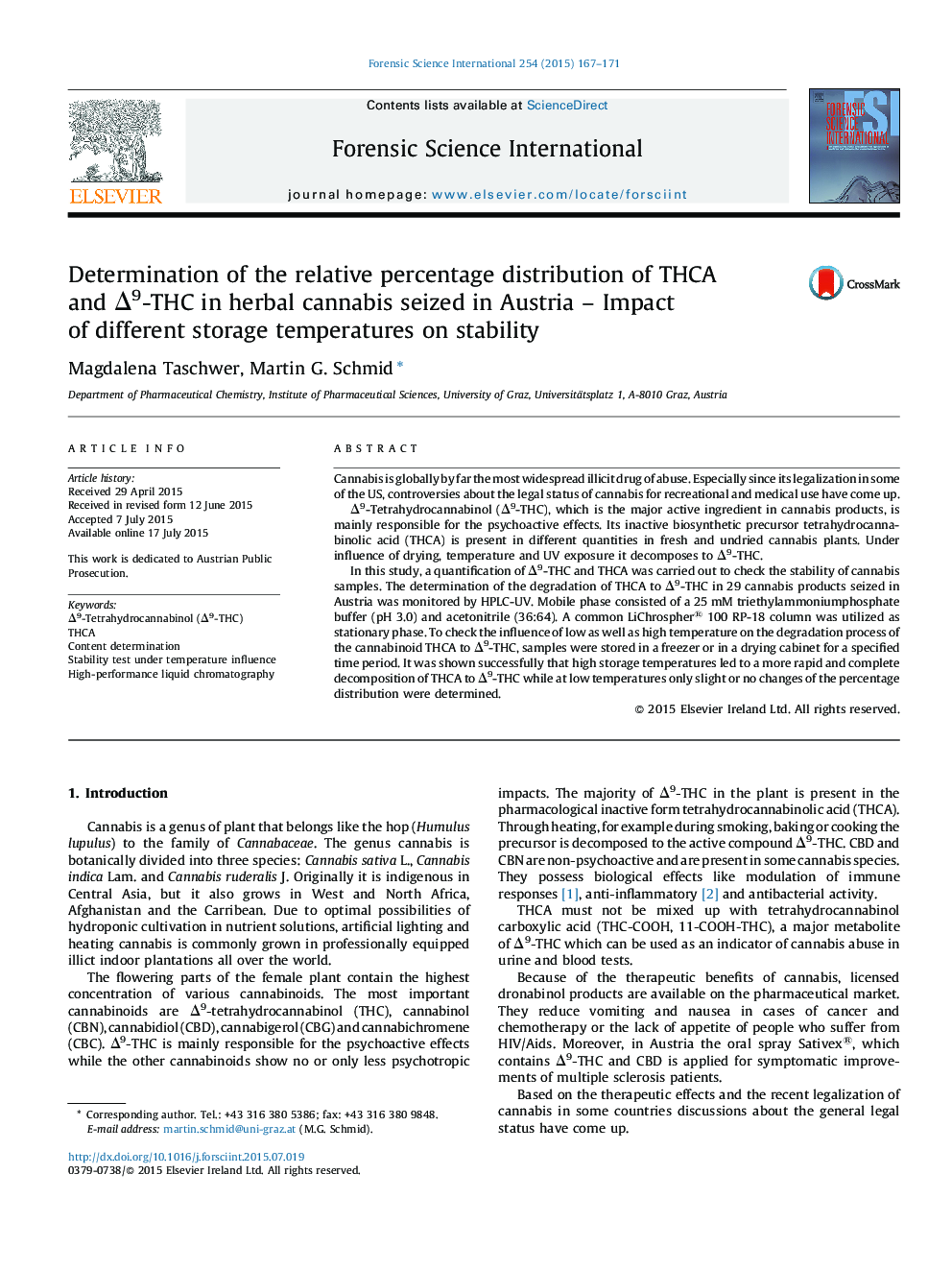| کد مقاله | کد نشریه | سال انتشار | مقاله انگلیسی | نسخه تمام متن |
|---|---|---|---|---|
| 95341 | 160427 | 2015 | 5 صفحه PDF | دانلود رایگان |
• Impact of storage temperatures on degradation of THCA to Δ9-THC is presented.
• HPLC-UV method was used for content determination.
• Analysis of 29 cannabis samples seized in Austria.
• Average relative ratio of Δ9-THC to THCA in dried cannabis plants was determined.
Cannabis is globally by far the most widespread illicit drug of abuse. Especially since its legalization in some of the US, controversies about the legal status of cannabis for recreational and medical use have come up.Δ9-Tetrahydrocannabinol (Δ9-THC), which is the major active ingredient in cannabis products, is mainly responsible for the psychoactive effects. Its inactive biosynthetic precursor tetrahydrocannabinolic acid (THCA) is present in different quantities in fresh and undried cannabis plants. Under influence of drying, temperature and UV exposure it decomposes to Δ9-THC.In this study, a quantification of Δ9-THC and THCA was carried out to check the stability of cannabis samples. The determination of the degradation of THCA to Δ9-THC in 29 cannabis products seized in Austria was monitored by HPLC-UV. Mobile phase consisted of a 25 mM triethylammoniumphosphate buffer (pH 3.0) and acetonitrile (36:64). A common LiChrospher® 100 RP-18 column was utilized as stationary phase. To check the influence of low as well as high temperature on the degradation process of the cannabinoid THCA to Δ9-THC, samples were stored in a freezer or in a drying cabinet for a specified time period. It was shown successfully that high storage temperatures led to a more rapid and complete decomposition of THCA to Δ9-THC while at low temperatures only slight or no changes of the percentage distribution were determined.
Journal: Forensic Science International - Volume 254, September 2015, Pages 167–171
